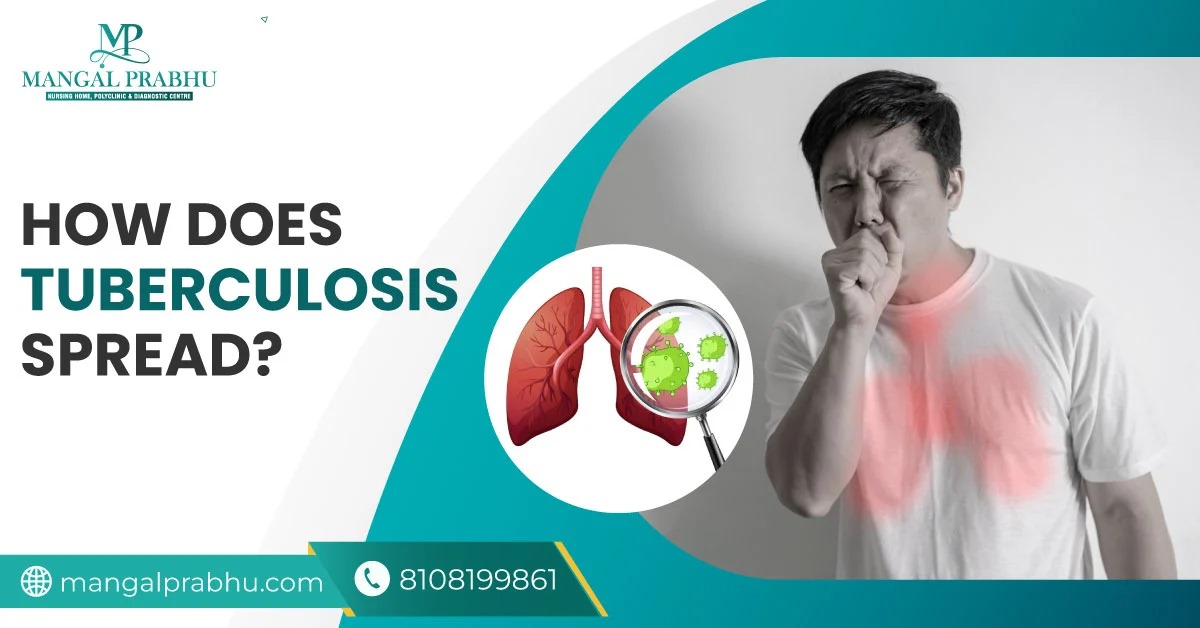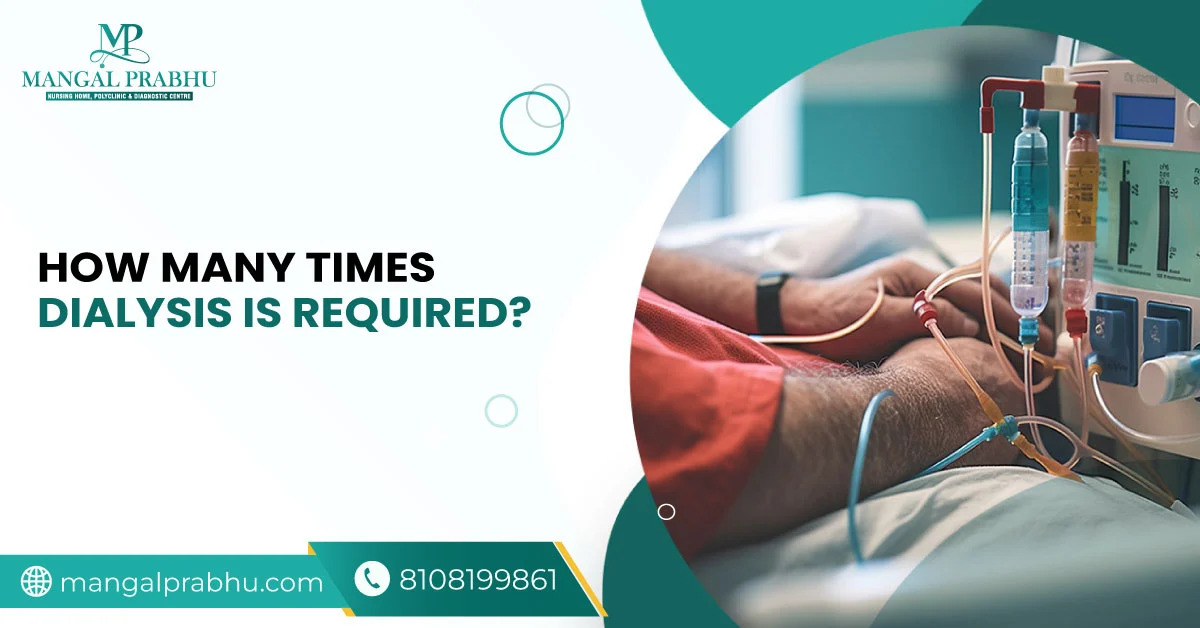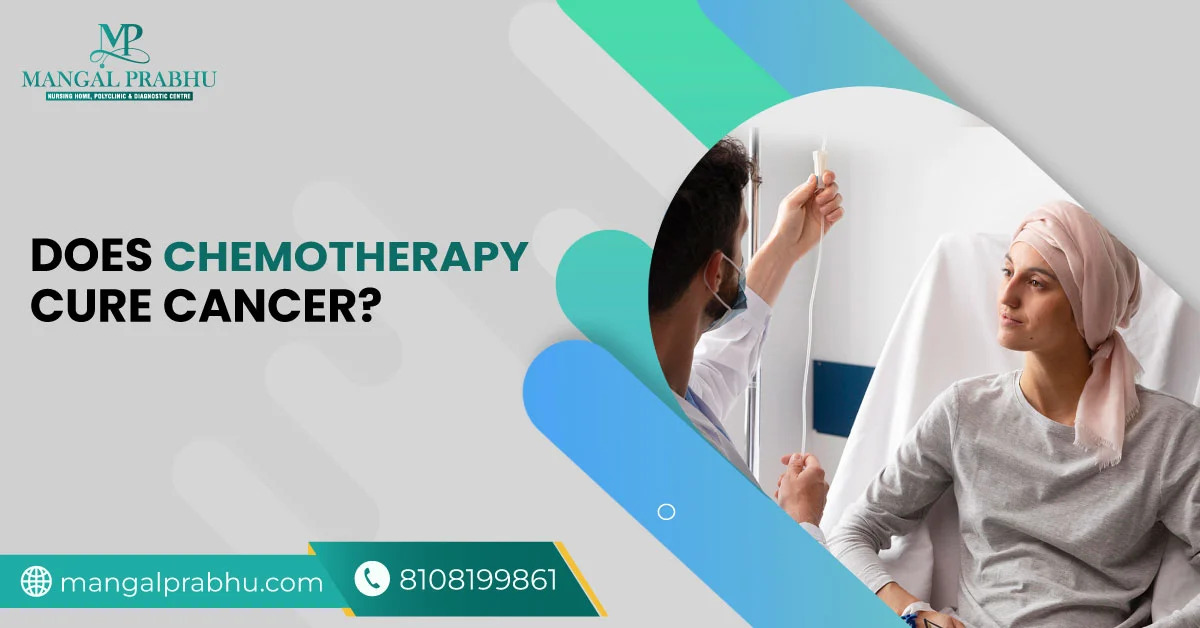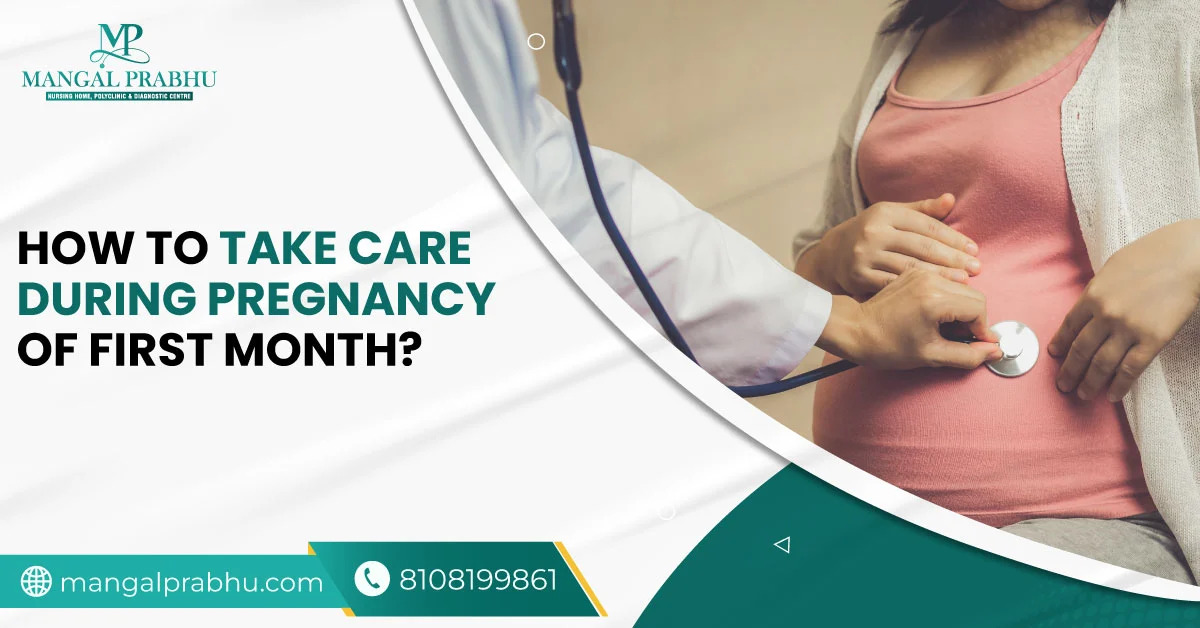
Causes of Autism Spectrum Disorder
ASD, short for Autism spectrum disorder, is a neurological disorder that affects one’s ability to interact with people, socialize, or communicate. The term “spectrum” adds multiple neurodevelopment issues, which were previously considered separate from autism. Autism is diagnosed in early childhood, mostly within the first year.
Sadly, the condition can’t be cured. You can get autism disease disorder treatment in Navi Mumbai to improve your child’s quality of life and their ability to socialize. Given the complexity of the disease and the multiple range of symptoms, it’s hard to pinpoint the exact cause of ASD. The condition is mostly associated with genetic and environmental factors.
Let’s see what causes autism and who’s at an increased risk.
1) Genetic Factors
Autism is a hereditary disorder. If one of your children has autism, there’s a 20% chance your second child will develop it, too. Genetic mutations are also linked to an increased risk of developing ASD. Fragile X Syndrome, for example, is a genetic disorder that causes autism and other brain development issues in children.
2) Environmental Factors
The risk of autism is high in children born to older parents. Some prenatal and postnatal factors can also affect your risk of developing autism.
3) Prenatal Factors
Maternal infection or health issues, such as gestational diabetes and obesity, can increase the risk of ASD in offspring. Working in an environment where you are exposed to heavy metals and environmental toxins can also affect your child’s brain development.
Certain medications you take during pregnancy are also linked to brain disorders in children. Doctors recommend iron, folic, and other prenatal vitamins during pregnancy to reduce the risk of autism in children. If a mother develops folic deficiency, the risk of neurological disorders in the offspring increases.
Your healthcare provider will recommend a second-trimester ultrasound to detect different anomalies, including the risk of autism in your offspring.
4) Postnatal Factors
Autism can occur after birth. If your baby had low birth weight, was born prematurely, or was deprived of oxygen, they are at a greater risk of developing ASD than healthy and full-term kids. Certain types of infections in children in the early years after birth can also cause autism in children. Meningitis, for instance, can cause inflammation of the tissues in your brain and affect your neurological function.
5) Neurological Factors
An abnormal brain structure or size is another common cause of ASD in children. Abnormalities in the amygdala—the part that processes emotions and the cerebral cortex—the part of your brain responsible for language, sensory development, and personality, can increase your risk of getting autism.
Children with autism might have a high level of certain neurotransmitters, such as serotonin and dopamine. Macrocephaly or large head in children can also contribute to ASD. Although it can be a family trait in some kids, macrocephaly can indicate an underlying issue, such as an enlarged brain, brain bleeding, and other complications.
Conclusion
If you notice behavioral and social issues in your child, it’s important to see a pediatrician in Navi Mumbai. Given the right treatment and early care, an autistic child can live a normal life.

Understanding White Discharge in Early Pregnancy
White vaginal discharge is not uncommon in women. However, an increased volume of discharge or a change in its color and texture can indicate an issue. Sometimes, an increased amount of white discharge can indicate pregnancy.
If you notice a drastic change in your vaginal discharge and it looks unusual, it’s best to visit a pregnancy hospital in Navi Mumbai to rule out the possibility of an infection or other health issues. Let’s learn more about the causes of white discharge, what it looks like, and how to manage it.
Causes of White Discharge in Early Pregnancy
Pregnancy-related vaginal discharge is called leukorrhea—a thin, white vaginal discharge that’s often seen in your early pregnancy.
During pregnancy, your primary reproductive hormones—estrogen and progesterone—increase rapidly. This leads to increased blood circulation to your pelvic floor, causing an increase in vaginal discharge.
Your pregnancy hormones result in the formation of mucus plug in your cervix, which creates a barrier protecting your uterus from infection. The cervical mucus can also cause excess white discharge. The cervical mucus leaks upon reaching full-term pregnancy.
Characteristics of White Discharge in Early Pregnancy
White discharge during pregnancy looks similar to the vaginal discharge you experience regularly. It can be thin, clear, or milky-white. What’s not common is a change in the texture of this discharge in early pregnancy. If the discharge becomes thicker or it keeps leaking continuously, it might indicate an underlying issue.
Pregnant women can experience white discharge throughout their pregnancy, and that’s completely normal as long as it’s not thick, has a jelly-like texture, or has lumps. Abnormal vaginal discharge also has a strong, unusual, fishy odor.
Vaginal bleeding during early pregnancy or at any stage during pregnancy is never normal. Sometimes, pink, brownish, or red discharge in early pregnancy indicates implantation bleeding. It can also occur later in your pregnancy, especially after a pelvic exam or sexual intercourse. Note that any kind of bleeding should be reported to a gynecologist and obstetrician in Navi Mumbai.
Managing White Discharge in Early Pregnancy
Normal white vaginal discharge in early pregnancy is absolutely normal and can be managed at home. These tips will help:
- Do not use scented products, soaps, or vaginal creams unless prescribed by your gynecologist
- Keep your vagina clean and dry to prevent infection
- You can wear pads to soak white discharge. Avoid tampons.
- Avoid douching during pregnancy.
- Avoid using wet wipes. Your genital area has self-cleansing properties. Using chemical-based wipes can irritate your genital tract and can affect your pH level.
- Always clean your vagina front to back after emptying the bowels.
- Do not wear tight panties or jeans. Avoid nylon and polyester fabrics.
- Drink enough fluids to stay hydrated and eat a balanced and healthy diet.
Conclusion
White vaginal discharge or leukorrhea occurs during early pregnancy, and it might continue throughout pregnancy. If you notice any unusual discharge, change in color, or the amount, seek medical advice. Sometimes, vaginal discharge, especially if it’s green or yellow, indicates an infection.

How Does Tuberculosis Spread?
Tuberculosis (TB) is a contagious lung infection that can affect other vital organs, including the kidneys, the brain, and the spine. Caused by the bacteria Mycobacterium tuberculosis, TB was the most common cause of death in the United States in the 20th century.
Now, tuberculosis treatment in Navi Mumbai is possible, but it still poses health risks. Note that TB can be active or dormant. Active TB can spread and cause flu-like symptoms. Tuberculosis is classified as dormant if your symptoms do not show up or it doesn’t spread. Here’s all you should know about tuberculosis and how it spreads.
Modes of Transmission
TB is a contagious illness that can spread from one person to another if they come in contact. Let’s understand the common modes of transmission.
1) Inhalation of Infected Droplets:
When someone with an active TB laughs, talks, or smiles, the germs can spread in the air. You can inhale these germs and get infected. The good news is that people with a good immune system can fight infection easily. They can develop latent TB that stays in their system and won’t cause any problems. The bacteria can, however, become active later.
2) Close Contact With an Infected Person:
If you live with someone who has an active TB or are in touch with colleagues, friends, and relatives with this contagious disease, there’s a chance you might contract tuberculosis. The risk is higher in people living in poorly ventilated spaces. This allows the bacteria to linger in the air for longer periods, increasing the risk of inhalation.
3) Contaminated Objects:
TB bacteria can also spread through contaminated surfaces. The risk is lower since the bacteria cannot survive for a prolonged period in a dry environment. You can develop an active TB if you touch a contaminated surface with live bacteria and transfer it to your body through the nose or mouth.
Factors That Contribute to the Spread
Certain factors increase your risk of contracting the illness. They include:
a) Lack of Awareness:
It’s important to understand the types of tuberculosis and how it affects each person differently. You must stay away from someone with a high temperature, persistent coughing, and other flu symptoms. Likewise, if you have tested positive for tuberculosis, keep your distance from your close ones.
b) Overcrowded and Unsanitary Conditions:
Although TB bacteria don’t survive on surfaces for long, you might contract tuberculosis from touching a contaminated surface. So, keep your surroundings clean and avoid overcrowded places.
c) Weakened Immune Systems:
People with weak immune systems, such as HIV-positive patients, are more likely to catch the TB bacteria than others.
Prevention and Control Measures
The Bacillus Calmette-Guérin (BCG) shot is given to newborns to protect them against tuberculosis. You must keep up with your child’s vaccination schedule to reduce the risk of TB and other bacteria-induced illnesses.
Early detection of tuberculosis can improve your treatment outcome, as early-stage tuberculosis is comparatively easier to treat than when it’s reached an advanced stage. See a pulmonologist in Navi Mumbai if you suspect TB symptoms.

How Many Times Dialysis is Required?
Your kidneys filter blood by removing waste products and excess fluid from your body through urine. Some autoimmune diseases, diabetes, and other medical conditions can result in kidney failure. If it reaches a point where your kidneys are unable to drain excess liquid from your body, a dialysis or a kidney transplant is needed.
Dialysis performs the kidneys’ function by removing excess waste from the bloodstream. If you experience nausea, vomiting, fatigue, and swelling, visit the nearest dialysis center in Navi Mumbai and get evaluated by a nephrologist.
Factors Influencing Dialysis Frequency
Unlike kidney transplants, dialysis is not a one-time procedure. You need to schedule the treatment every week or more frequently depending on your health, the stage of kidney disease, and your doctor’s recommendation.
So, the question is, how often do you need to undergo dialysis? Let’s check out the factors that influence the frequency of this treatment.
1) Severity of the Disease:
The dialysis frequency depends on the stage of your kidney disease. If your kidney hasn’t lost its function completely, you will have fewer dialysis sessions than someone diagnosed with end-stage renal disease.
2) Type of Dialysis:
Hemodialysis is done 3-4 times weekly at a dialysis clinic. Peritoneal dialysis must be done daily.
3) Your Health:
People with diabetes, high blood pressure, and other medical illnesses that weaken their immune system might require more frequent dialysis sessions than others.
4) Doctor’s Recommendation:
Your nephrologist will assess your condition and recommend changes in the dialysis frequency based on how well your body responds to the treatment.
5) Symptoms:
If your symptoms worsen or you notice a sudden change in your health, you might have to get dialysis more frequently to manage your condition.
Standard Dialysis Schedule
Hemodialysis is the most common procedure in which blood is removed from the body and diverted to artificial kidneys, where it’s filtered and returned to the body. The procedure can last between 3 and 5 hours and is carried out 3-4 times a week, depending on your health and the severity of the disease.
You can also schedule hemodialysis five times a week and reduce the duration of each procedure to three hours. Peritoneal dialysis is done more frequently, about four times a day, and it takes up to 40 minutes per session.
Can You Change the Frequency of the Dialysis?
The frequency of kidney dialysis treatment in Navi Mumbai can be adjusted based on your health, kidney status, symptom management, and lab results (to name a few). Likewise, the frequency of the dialysis changes when you switch the type of dialysis treatment (from hemodialysis to peritoneal dialysis or vice versa).
If you are considering changing the dialysis frequency or the type, make sure you discuss it with your nephrologist first. They will offer better guidance. You must also notice your symptoms and schedule follow-up visits regularly.
Conclusion
Discuss your health and lifestyle with a nephrologist. They will guide you in choosing the best type of dialysis procedure. Home dialysis offers better flexibility. Talk to your doctor to learn more about the frequency of dialysis that will best fit your condition.

Does Chemotherapy Cure Cancer?
Recovery from cancer is not a cakewalk. The first thing that strikes our mind when it comes to cancer is chemotherapy. It’s a treatment used to kill cancer cells through intravenous administration of the drugs.
These drugs are designed to destroy the rapidly multiplying cells, thus inhibiting cancer growth. While chemotherapy treatment in Navi Mumbai is quite effective in treating cancer, the procedure comes with many side effects. Besides, there’s no guarantee it will cure cancer and prevent relapse.
How Chemotherapy Works
Depending on the type and stage of cancer, chemotherapy can be used as a standalone procedure or in conjunction with radiation therapy and surgery. It can shrink the tumor and destroy cancer cells. Most chemotherapy drugs are given intravenously, but your doctor might recommend a topical application, a single injection shot, or pills.
An oncologist in Navi Mumbai will tell you the number of chemotherapy sessions you need to undergo to kill cancer. Then, based on how your body responds to the treatment, your doctor will either stick to the plan or advise additional treatment, such as surgical removal of the tumor, radiation therapy, or hormone therapy, for the best outcome.
Effectiveness of Chemotherapy
The effectiveness of chemotherapy can vary for each patient. It depends on the type of cancer, the patient’s overall health, the size of the tumor, and how far it’s spread. However, studies show that those exposed to chemotherapy have a better survival rate than those who never undergo chemo. The sooner you report your symptoms and get an accurate diagnosis, the higher your survival rates.
Note that cancer can return even after you are declared cancer-free. Some types of cancer have a chance of relapse, requiring more rounds of chemotherapy. Your oncologist will schedule regular follow-up visits to ensure the cancer has not returned.
Limitations of Chemotherapy
The chemo session isn’t always painful, especially not for those taking it through pills and topical. Intravenous chemo and injections can hurt a little, but it’s nothing more than a slight burning sensation.
Chemotherapy is used to destroy the rapidly growing cells in your body. That’s how it helps kill cancer fast. However, cancer cells are not the only cells that multiply quickly. The cells in your skin, hair follicles, digestive tracts, and other parts of the body also grow fast.
Cancer treatment can also destroy these healthy cells, leading to side effects such as hair loss, fatigue, constipation, diarrhea, vomiting, loss of appetite, and infection. The good news is that the side effects of chemotherapy last for a short while, usually until your treatment stops. Some side effects are, however, permanent. They include infertility, heart problems, and early menopause.
Conclusion
Chemotherapy is an effective way to kill cancer, but the treatment comes with side effects and is usually advised with surgery and other procedures. Ask your oncologist about the success rate of chemotherapy and the side effects. Fortunately, some types of cancer disappear completely following the chemotherapy and don’t require additional treatment. But there’s always a chance of a relapse.

How to Reduce Acid Reflux?
Most of us have experienced acid reflux at some point. It happens when stomach acid flows backward and irritates your esophagus, throat, and chest.
The burning sensation in your chest, indigestion, and stomach ache are common signs of acid reflux. Although it’s common to have acid reflux after a heavy, spicy meal, some people develop chronic acid reflux called “gastroesophageal acid reflux.
Let’s see what can help you cope with the reflux symptoms and when you should see a general physician in Navi Mumbai for GERD.
Lifestyle Changes
You can effectively manage acid reflux symptoms by making small changes to your eating habits and routine after meals. Here’s what you can do to take control of your health.
i) Maintain a Healthy Weight
Acid reflux is common in overweight and obese people. Excess fat around the belly can cause the esophageal sphincter to malfunction, allowing stomach acid to flow toward the esophagus and throat. Excess weight can also disrupt hormone function, affecting digestion and appetite.
ii) Avoid Trigger Foods and Drinks
Certain foods and drinks can trigger acid reflux. Caffeine-rich food, onion, garlic, tomato sauce, and fried foods are some common triggers, although the type of food that causes acid reflux can vary from person to person. Your best bet is to pay attention to how your body reacts to different foods.
iii) Eat Smaller, More Frequent Meals
The most common cause of acid reflux is overeating. Eating a large meal can worsen your symptoms if you already have GERD. Instead of eating three large meals, you should eat smaller meals frequently.
iv) Elevate Your Head
Do not lie down immediately after eating. Walk for 10-20 minutes and then sleep with your head elevated. This prevents the acid from flowing back into your esophagus.
Home Remedies for Acid Reflux
a) Drink Chamomile Tea:
Chamomile tea has anti-inflammatory properties, is good for digestion, and relieves stress. It can help relieve GERD symptoms.
b) Apple Cider Vinegar:
Despite limited scientific research, people believe diluted apple cider vinegar can relieve upset stomachs and manage acid reflux.
c) Chew Gum:
Chewing gum increases saliva production, soothes acid reflux, and relieves heartburn.
d) Ginger and Licorice:
Ginger, Licorice, and other herbal teas are great home remedies for people with occasional GERD episodes.
Over-the-Counter Medication
If you don’t find relief from home remedies, you can try over-the-counter medication. This mainly includes antacids, which are known for neutralizing acid and offering immediate relief. Note that antacids do not heal inflamed or damaged esophagus.
H2 blockers are for those with frequent episodes of acid reflux. It reduces the acid production in your stomach. People with severe GERD should consider proton pump inhibitors. These are used to block acid production and heal the inflamed esophagus.
When to See a Doctor
Noticing frequent episodes of acid reflux, even after trying home remedies and over-the-counter medication, is a sign you need to get acid reflux treatment in Navi Mumbai. Sometimes, the symptoms of a more severe medical condition are confused with acid reflux. If you experience extreme chest pain with pain radiating to your arm and jaw with shortness of breath, seek medical attention immediately.

What Not To Do After Knee Replacement?
People diagnosed with osteoarthritis and a completely torn ACL can get relief from knee replacement surgery. While non-invasive procedures, like physical therapy, can be helpful, it doesn’t work for everyone. Knee replacement has become fairly common.
A knee replacement surgeon in Navi Mumbai will provide detailed instructions for a speedy recovery after the procedure. There are certain do’s and don’ts you should follow to stay active and healthy. Here’s what to avoid after the surgery.
1) Ignoring Pain and Discomfort
Mild soreness and pain around the incision site might be normal, but severe pain or discomfort can be a warning sign. Talk to your surgeon if you experience pain while moving the affected joint, walking, or exercising. They will prescribe stronger pain-relief medication. Ice massage to the affected area can reduce swelling and help manage pain.
2) Skipping Physical Therapy
Physical therapy starts immediately after the surgery. Your surgeon will tell you which exercises are safe. It’s normal to experience discomfort during physical therapy, but that’s the best way to heal quickly. Attending physical therapy sessions will improve your mobility and increase your knee joint’s flexibility. It will also strengthen the muscles around your knee. Moreover, regular exercise improves blood flow throughout your body, thus preventing blood clots and other surgical complications.
3) Overexertion
Practicing light activities is okay, but do not overdo it. You should take a break from work for at least 6-8 weeks, and longer if you are an athlete or have a job that requires lots of movement. Ask your friends and family to help you with your household chores.
Remember, your priority should be healing. You can get back to work once your doctor gives the go-ahead. Starting work too soon or exhausting yourself can lead to pain after the surgery. So, focus on healing before resuming your routine.
4) Neglecting Wound Care
Infection and inflammation around the incision site can delay your recovery. Proper wound care is essential to keep the site clean. Not only does proper wound care reduce scarring, but it also prevents surgical complications, like excessive bleeding and reopened wounds. So, how exactly do you care for your wound after knee replacement surgery?
Keep the area clean and dry. Change the dressing regularly and watch out for the signs of infection. Follow a healthy diet and an active lifestyle. Over-the-counter pain relief medication can also help relieve pain.
5) Not Using Assistive Devices
Assistive devices, like crutches, cane, walking sticks, and other walking aids, are designed to provide comfort as you walk, stand, and climb stairs. These supportive devices are a must for patients who have undergone knee replacement surgery. The right supporting device will provide stability and support to your knee joint, making it easier to move around without pain. You can also get a ‘grabber’ to pick your stuff without bending.
Conclusion
Contact a specialist at an orthopedic hospital in Navi Mumbai and learn all about recovery after knee replacement surgery. Get the right walking aid and start physical therapy immediately to recover fast.

How to Take Care During Pregnancy of First Month?
Exciting news! You’re embarking on a journey of a pregnancy. As you start experiencing early signs like fatigue, nausea, vomiting, and sore breasts, it’s important to remember that the first trimester can be a rollercoaster. To ensure a smooth ride, consider visiting a pregnancy hospital in Navi Mumbai and consulting with the best gynecologist.
These tips will help you navigate the first trimester.
Healthy Lifestyle Choices
Watch your diet. Remember, your body needs only 300 extra calories in the initial stage of pregnancy, so you don’t have to eat for two. The food quality, however, plays a significant role in keeping you and the little one healthy. Add healthy snacks, protein, vitamins, and other nutrients to your diet.
Exercise is a great way to stay active and healthy. But don’t overdo it. Talk to your gynecologist before practicing any exercise, just to be on the safe side.
Prenatal Vitamins and Supplements
The first trimester of pregnancy lasts for 13 weeks. During this period, you are supposed to take prenatal vitamins to ensure proper fetal development. This includes 400 micrograms of folic acid daily. Your doctor will also recommend calcium, iron, and zinc supplements, which might last throughout your pregnancy.
Remember the Don’ts of the First Trimester
Alcohol, cigarettes, and tobacco should be totally avoided before and during pregnancy. You must also steer clear of excess coffee and other caffeine-rich foods, as well as unripe papaya and pineapple. Additionally, your gynec will advise you against eating the raw and undercooked meat. It increases your risk of contracting listeria and salmonella, which can cause miscarriage, premature birth, and severe birth defects in your baby.
Get Screenings
Prenatal care is important at every stage of pregnancy. Since the first few months are the most critical, you must consult a qualified gynecologist and obstetrician in Navi Mumbai every month or as frequently as they advise.
Your doctor will order blood work, urinalysis, and an ultrasound in the first month. These are done to evaluate your and the fetal health. The first-trimester ultrasound shows your baby’s heartbeat, estimated due date according to the fetal growth, and whether your pregnancy is progressing well.
Manage Pregnancy Symptoms
The first trimester is the hardest for most women. A surge in your estrogen combined with the pregnancy hormone Human Chorionic Gonadotropin can take a toll on your mental and physical health. Coping with the physical symptoms can be exhausting. These symptoms occur because of the development of the magical organ “placenta,” which is responsible for providing nourishment to the fetus. Hopefully, they will subside in the third or fourth month.
Your gynec will prescribe medication for nausea, vomiting, and other symptoms. Try to rest as much as possible. Surround yourself with positive people and stay hydrated.
Conclusion
It’s not just the physical symptoms that can be challenging, but the emotional changes due to the sudden rise in hormone levels are equally difficult. To stay healthy during pregnancy, stay active, eat a healthy diet, take your prenatal vitamins, and practice exercise and meditation.

How Long Can You Live After Your Appendix Bursts?
Located on the lower right section of your belly, the appendix is a small finger-like organ. It can become inflamed, often necessitating immediate surgical removal. Appendicitis can escalate rapidly, leading to swelling and pus formation inside your appendix. Fortunately, the appendix doesn’t play a vital role in your body and can be removed safely. It’s advisable to consult a qualified appendix surgeon in Navi Mumbai to discuss your treatment options.
What Happens When Your Appendix Bursts?
Appendicitis, inflammation of the appendix, is a medical emergency and requires immediate care. If left untreated for a long time, the inflamed appendix can burst, and the infection can spread throughout your body. It’s a life-threatening condition that requires immediate surgical removal of your appendix.
The risk of appendix burst increases with time. The longer you delay the treatment for appendicitis, the higher the risk of a ruptured appendix. A ruptured appendix occurs when an infection spreads outside the appendix. If bacteria enter the appendix, they start multiplying, causing swelling. The infection keeps escalating until the swollen appendix bursts and the pus oozes out into the abdomen.
Recovery and Survival Rates After a Burst Appendix
A burst appendix can have serious complications, some of which are life-threatening. The mortality rate of perforated appendicitis is 4.8 percent. Treatment for a ruptured appendix depends on where it has spread. If there’s an abscess, you must take antibiotics to drain it.
The best appendix treatment in Navi Mumbai is open surgery, which gives the surgeon a clear view of the infection and its severity. Recovery can take up to 6 weeks. Your doctor will provide instructions to speed up your recovery. For instance, you will be advised to avoid heavy lifting or strenuous exercise that can put excess pressure on the incision site.
The recovery can take longer if the doctor has inserted tubes into your abdominal cavity for abscess drainage.
Long-Term Effects and Complications
As mentioned earlier, the biggest complication of a ruptured appendix is peritonitis, a condition in which the bacteria from the appendix enter your abdominal cavity, causing severe symptoms like excess abdominal pain, fever, chills, fast breathing, and confusion.
The appendix ruptures between 48 and 72 hours after the inflammation. The condition usually causes pain in the lower abdomen, starting around the navel and settling in the lower abdomen. Other symptoms of appendicitis include:
- Bloating in your abdomen
- Difficulty passing gas
- Nausea and vomiting
- Pain in the belly while walking, climbing stairs, jumping, and practicing other physical activities.
A ruptured appendix can lead to sepsis or an abscess (a pocket of pus forming inside your abdominal cavity). The abscess needs to be drained through a tube inserted into your abdomen. Your doctor will prescribe antibiotics to clear the fluid.
If you have developed an abscess, your doctor will wait until it is drained completely before performing appendix removal surgery.
The burst appendix is an emergency. Your recovery and the survival rates for appendicitis depend on how soon you get the treatment. The condition requires quick diagnosis and immediate treatment to prevent complications.

After ACL Surgery When Can I Walk Normally?
The ACL that links the thigh and shin bones serves to stabilise the knee. Injuries to the ACL happen primarily during sports such as football or skiing characterised by abrupt halts, wrong landings from jumps, or sudden direction changes.
Sometimes the ligament is completely torn and needs to be surgically reconstructed with grafts. The knee needs time to recover after undergoing surgery to repair a torn ACL – meaning you won’t be able to do certain things (like full range motion exercises with weights) right away.
Post-surgery Guidelines for Walking and Weight-bearing
After having ACL operation, resting, walking and bearing weight on the operated leg have specific instructions given by the doctor who has performed the surgery. Patients are mostly encouraged to use crutches, so that they do not apply their entire body weight on one of their legs within a period of 4-6 weeks.
While walking, it is allowed for patients to touch their foot down, but they should not fully bend their knees while at the same time they should not be putting all their weights on the other leg since this can be dangerous. Compliance to these instructions is essential for recovery as well as avoiding future injuries in tissues.
Factors that Influence the Timeline for Walking Normally
Each person has a different recovery timeline depending on factors like age, severity of injury, associated injuries, graft or tissue used, adherence to physio and lifestyle. Younger people generally heal faster than older adults.
Accompanying injuries like meniscus tears may slow down recovery. Using one’s own hamstring or patellar tendon graft versus a donor graft also has an impact. Committing to regular sessions with an ACL Surgeon in Navi Mumbai can help get strength and mobility back sooner.
Tips for a Successful Rehabilitation and Faster Recovery
The key is to follow the rehabilitation protocol diligently under expert supervision of an ACL surgeon in Navi Mumbai. Gradual loading of weight and range of motion exercises along with strengthening drills are crucial.
Using crutches correctly, icing, stretching and bracing the knee all aid healing. Returning to normal activities is a step-by-step process as mobility and muscle function progresses. Staying motivated even when frustrated is important to restore knee function fully over 6-9 months.
Signs to Watch for to Ensure a Safe Return to Normal Walking
Some warning signs that a person isn’t quite ready to walk normally without support are swelling, limping, pain while bearing weight and instability in the knee. Giving the knee enough rest and rehab is essential before gradually dropping crutches with approval from your ACL surgeon in Navi Mumbai.
Rushing back to activities prematurely may lead to reinjury as the graft needs time to mature. Returning to sports demands even more recovery time under an expert’s guidance.
The Importance of Following your Doctor’s Advice and Attending Physical Therapy Sessions
Compliance with the ACL Treatment in Navi Mumbai instructions including wearing a supporting brace, avoiding high-impact activities and diligently participating in physiotherapy can expedite the process of getting comfortable walking again.
The physical therapist develops a customised strengthening program to regain flexibility and muscles lost after surgery and inactivity. If exercises aren’t performed correctly, it can negatively impact recovery. Consulting with your surgeon and continuing therapy for many months is crucial to avoid long term issues like arthritis.
Conclusion
While recovering from ACL reconstruction, one must be patient as returning to normal walking takes time. It is roughly around 3-6 months for most people to walk confidently without a limp. However, it may take up to a year to regain full knee function and strength to participate in advanced sports and activities.
The timeline can be accelerated by religiously following the treatment protocol under an experienced ACL surgeon who does ACL Treatment in Navi Mumbai and addressing any associated injuries or pre-existing conditions as well.
